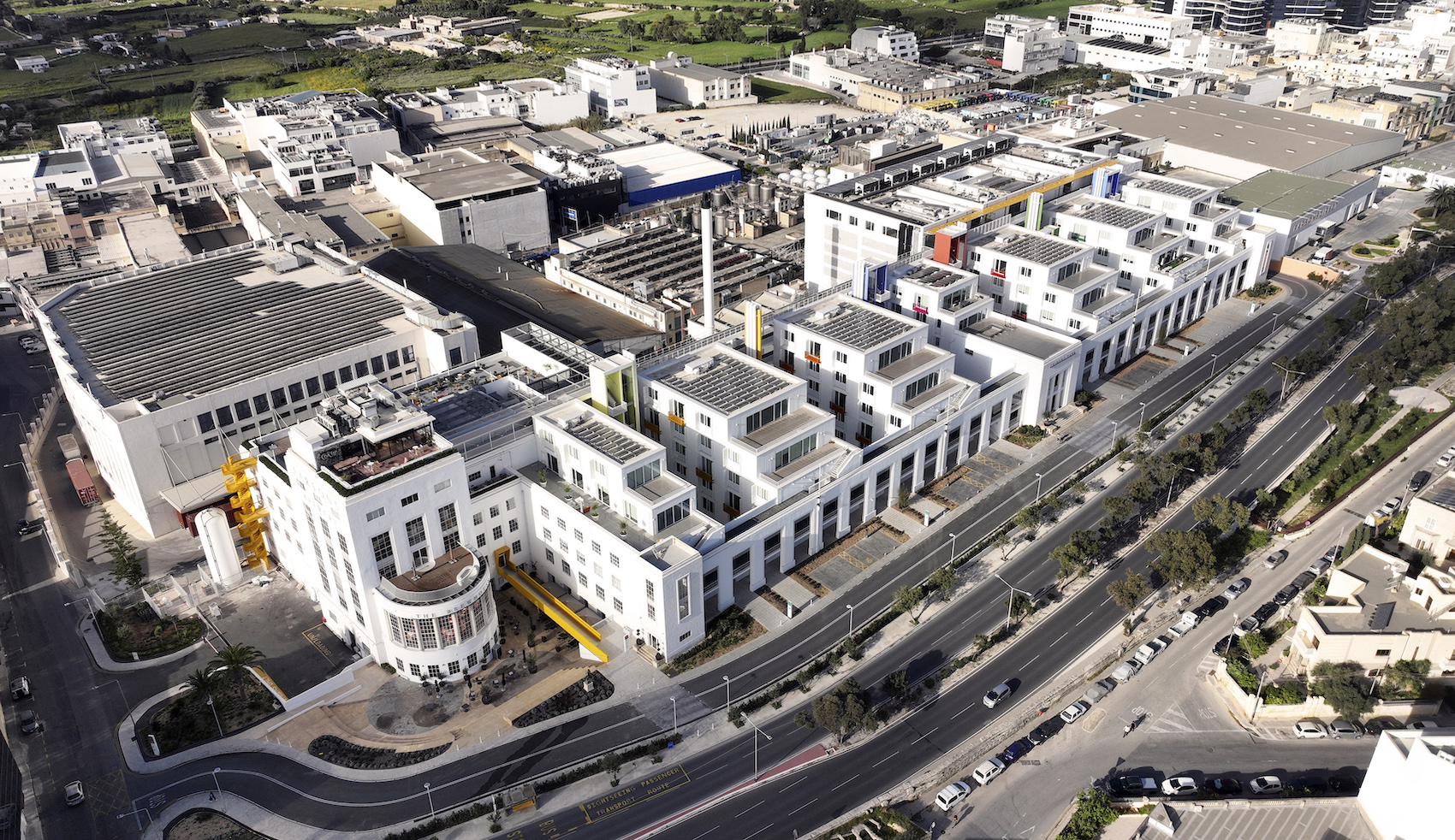ritchie*studio’s bold reworking of a listed brewery in Malta combines spatial inventiveness with environmental performance and future flexibility.
Photos
Joe Smith
Won in competition and designed to BREAM Excellent, ritchie*studio’s reworking of the listed Simonds Farsons Cisk brewery in Mriehel, Malta, comprises the restoration and transformation of a 7,000-square-metre Art Deco style building into a series of interactive leisure and business spaces.
New roof openings and geometric voids within the old structural walls and floors have transformed the dark interior into a series of interconnected rooms bathed in daylight. The fermentation vats have been converted into co‐working and collaboration spaces, while old storage and processing area have been transformed into microbreweries, museum exhibits, meeting rooms and cafes. A series of terraces provide panoramic views across the island to Mdina and Valletta.
Beyond the retained 200‐metre long colonnade lie Trident Park’s six landscaped courtyards, which separate seven, new, low‐rise, stepped, mixed‐use buildings covering 15,000 square metres. The latter cover only 43 per cent of the site, and the meticulously designed courtyard gardens provide a sensory haven for the building’s occupants, visitors, and the general public alike.
The gardens themselves are designed around orchard fruit of varying hues, and incorporate external shared vertical circulation cores that echo these colours to provide clear orientation. A key economic benefit of the circulation cores is the significantly higher net‐to‐gross floor ratio of 95 per cent, surpassing the conventional 70‐80 per cent of traditional office spaces. Not only are fewer lifts required, but access is guaranteed even if one of the lifts is out of service. Shaded north and south colonnades complete the composition and serve as conduits providing access across all levels.
The layout of the buildings provides a range of lettable space, from entire five‐floor structures to small areas of 200 square metres. Each floor is adaptable, allowing for future repurposing as residential apartments, live/workspaces, hotels, or a combination thereof. Trident Park is a radical reinterpretation of the office environment, drawing inspiration from the Knights Templar’s palaces while prioritising genuine sustainability, says the architect. Within this setting, individuals can work, relax and communicate, benefitting from a shared urban workplace lifestyle that is both sensorily enlightened and economically viable.
Key environmental moves include integrating thermal mass, cross‐ventilation, ample levels of glare‐free daylighting, and huge rainwater reservoirs. The ambition, despite the challenges of Malta’s hot climate, was to create workspaces that require no air conditioning, explains the architect. This was accomplished in part by using opening east/west‐facing windows. Each building partially shades its neighbour, while their vertical brise soleil create an ever‐changing interplay of light and shadow.
A thermally active building system water cools the floor slabs overnight, significantly reducing the energy required for day‐to‐day operations. The structural slabs serve as ceilings and are devoid of intrusive light fittings and other distractions. This provides a serene zen-like surface that reflects artificial light from purpose‐designed ‘Levita’ uplighters.
The project achieves a carbon footprint that is 55 per cent less than Malta’s prevailing standard. Utilising locally‐sourced materials for the buildings’ structure and walls has reduced imports, while also delivering exceptionally low‐maintenance structures. The comprehensive Life Cycle Analysis demonstrates a 73 per cent reduction in operational carbon emissions, and a 60 per cent reduction in carbon emissions related to renewal/repair. On‐site solar energy provides all mechanical plant electricity needs.
Additional Images
Source: Architecture Today








